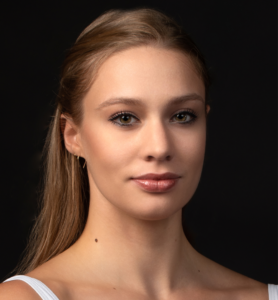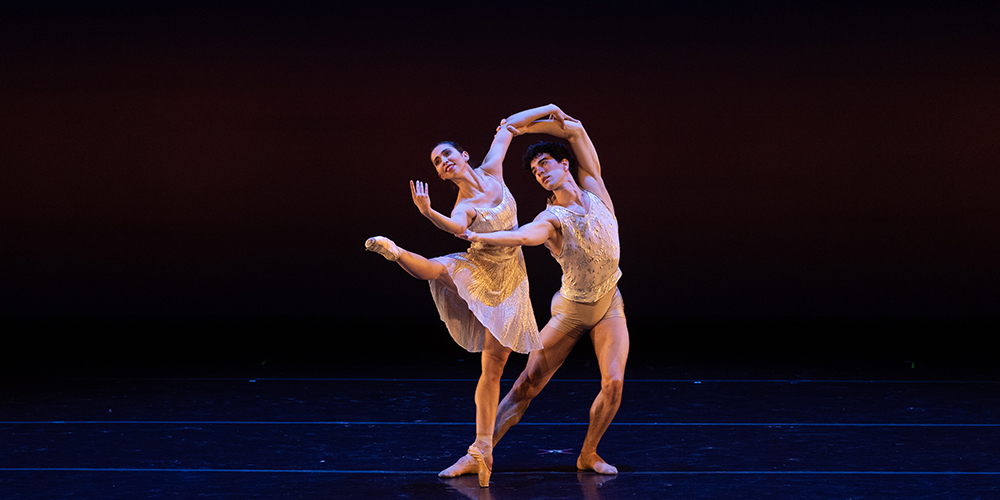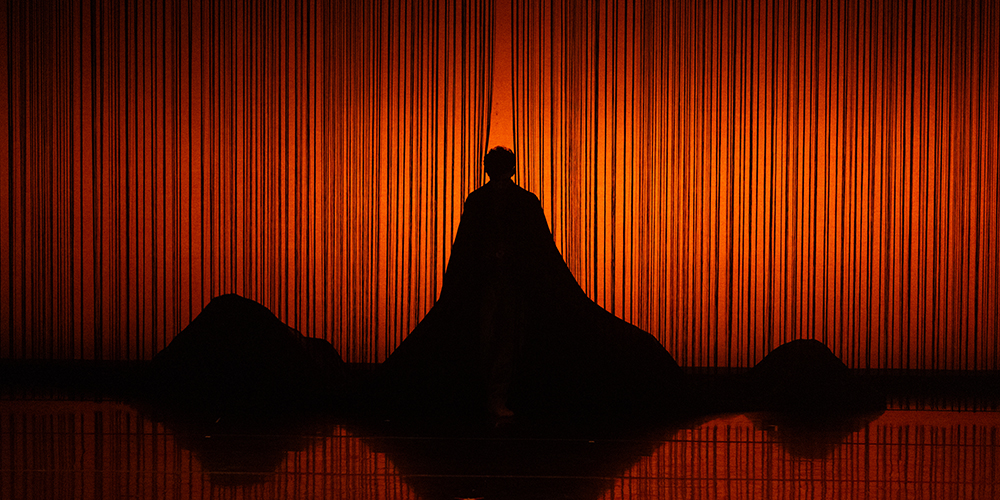Featuring Ballet Arizona’s Dancer Eastlyn Jensen

[Q] How many pointe shoes do you think you go through per season?
[EJ] I go through roughly 75 pairs of pointe shoes for the season. The number of pairs required varies between performances depending on the choreography within each performance and the needs of the dancer. For example, choreographic variations determine the requirements of the shoe (softer, harder, etc.) and the preferences of each dancer.
[Q] How many do you go through weekly?
[EJ] The Company provides two pairs of pointe shoes weekly. Nearer to performances, we are able to request more pairs depending on casting and other factors. For example, during “The Nutcracker”, I often have the opportunity to perform the Snow, Waltz of the Flowers and Marzipan variations. I need both pink and black pointe shoes to fulfill the costume requirements for each divertissement. I like hard and newer pointe shoes for flowers because it has many bourrees and balances on pointe. For the snow divertissement, I prefer soft shoes because it requires a lot of running and jumping in the shoe, which is easier in a more malleable shoe. I typically “recycle” the old flower shoes when they are not hard enough into my shoes that I wear for snow. For Marzipan, I cannot wear pink shoes. The costume requires a black shoe, which is dyed by the wonderful costume shop at Ballet Arizona. Once our pink shoes are dyed, they tend to harden causing them to last longer.
[Q] How many years did it take for you to get on pointe?
[EJ] I started a “Pre-pointe” class when I was nine years old. It was a class to strengthen one’s ankles and toes to prepare them for a pointe shoe. The following year I got my very first pair of pointe shoes, they were Bloch Eurobalances. My “Pointe” classes still consisted of the strengthening exercises, but the second half of the class we were learning combinations at the barre. People often ask if it hurts the first time, but I can confidently say that it is such an exciting step in one’s ballet trajectory that it doesn’t hurt too badly. Once a dancer finds what works for them regarding padding in the shoe, which could be lambswool, paper towel, a toe pad, a sock, or just taped toes, everything works out.
[Q] How long does a pointe shoe last?
[EJ] There are many factors that contribute to the lifetime of a pair of pointe shoes. Most dancers will use a pointe shoe glue or shellac to lengthen the life of the shoes. One factor that impacts a shoe’s performance lifetime is the choreography of the repertoire in which the dancer uses the shoe. For example, in February 2020, we performed “A Midsummers Night Dream” and during Titanita’s variation, the fairies (including myself) are around her on point for most of the variation. Being on pointe for long periods of time and long rehearsals wears more on the pointe shoe, specifically the box (portion for your toes) and the shank (spine of the pointe shoe).
Another factor is the dancer’s own anatomy. For example, my left foot is much more flexible than my right foot, so my left shoe often “dies” before my right shoe. I tend to prepare my left shoe differently than my right one, gluing the left shoe shank much more than the right one. Doing so provides extra support in the left shoe that I know I will require.
The performance environment also is a factor. Ballet Arizona is very fortunate to be able to perform outside at the Desert Botanical Gardens every season. These performances occur at the end of May/beginning of June when the Arizona weather warms and the heat kicks in. Dancing in the hot conditions and perspiring more than usual, are not ideal conditions for our pointe shoes. Alternating shoes in not wearing the same pair day-to-day, allows the shoes to dry which is an effective strategy when dancing in the heat.
[Q] Do you have to provide your own or does BAZ cover them for you?
[EJ] Ballet Arizona generously provides pointe shoes to its Company dancers. Ballet Arizona is so very grateful to have the wonderful support of such a committed donor community that maintains us. Their support makes all that we do at Ballet Arizona possible.
[Q] Why are pointe shoes so expensive?
[EJ] Pointe shoes are very expensive because they are all hand made. Ballet Arizona dancers all wear imported Freed of London pointe shoes. It is always so fascinating to watch videos online of the workshops and how each shoe is crafted. A shoemaker will typically make 40 pairs a day, that is 80 shoes! The work put into making pointe shoes from the carving of the shank, to the stitching of the satin is grand. On top of this, each dancer has a different specification for their shoe. Freed has many different makers of shoes, each creating a pointe shoe designed slightly different for various needs of dancers. Once a dancer finds a maker they like, they are able to adjust certain parts to the shoes such as changing the strength of the insole, the lengths of the vamp, the lengths of the back of the heel, the pitch and width of the platform and strength of the block. For example, I prefer the castle maker, 6.5 XX(X referring to the width). I have a heel pin (which adds a quarter of length to the back of the heel), I have a higher vamp, forteflex, and wing. It was very special receiving my first pair because they customize these shoes specifically for you and it was neat having my name labeled on the bottom of my shoes as well as the date they were made.
Ballet Arizona Dancers in ‘Ballet Under The Stars‘, photo by David Knox.







